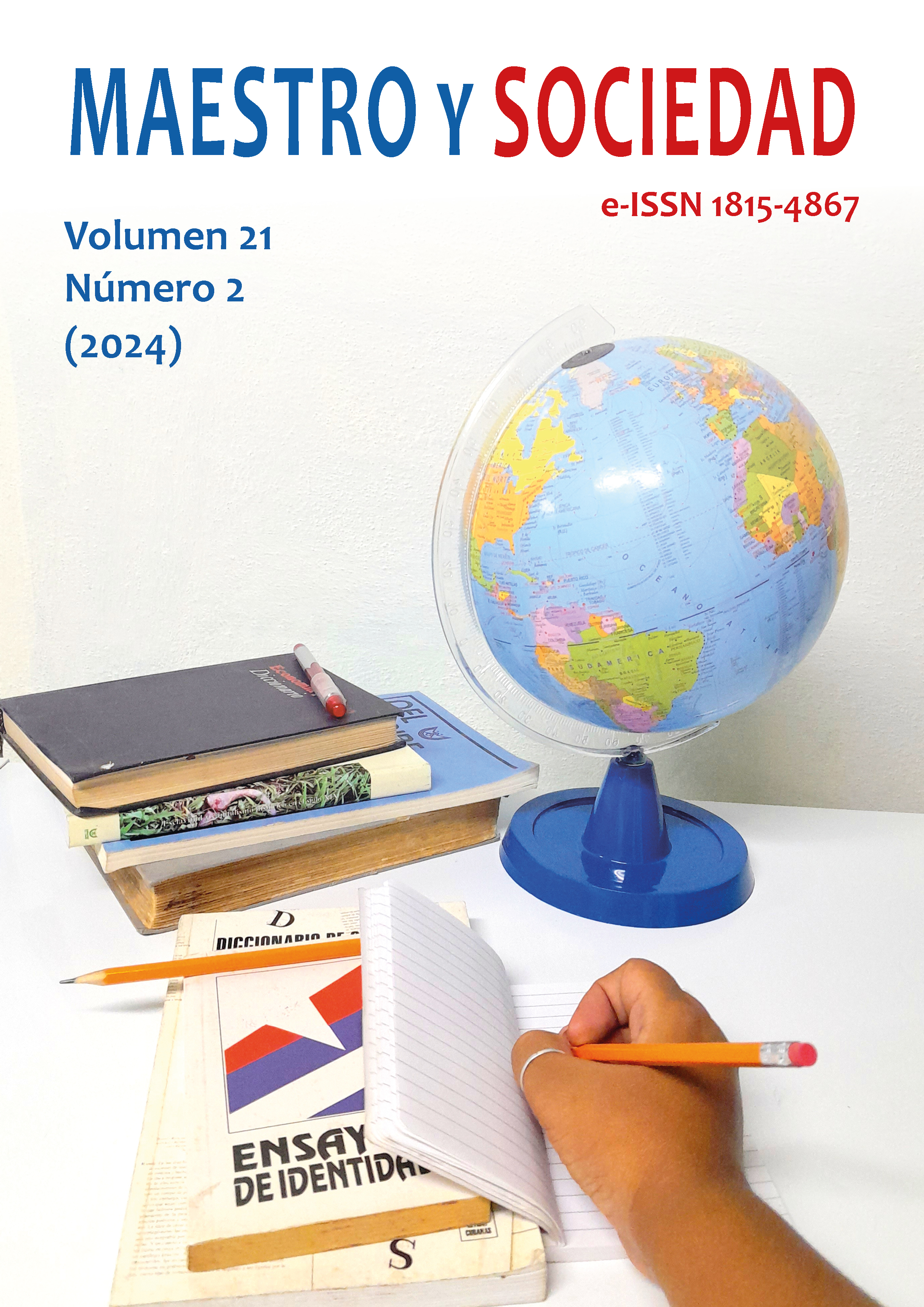Análisis crítico del sistema de ejecución penal en Ecuador: Regímenes de rehabilitación y desafíos jurídicos
Palavras-chave:
Sistema de ejecución penal, Regímenes de rehabilitación social, administración de justiciaResumo
Introducción: El presente estudio tuvo como propósito analizar el sistema de ejecución penal ecuatoriano a través de la aplicación de los regímenes de rehabilitación penitenciara, indagando en diversas doctrinas, normativas y la jurisprudencia nacional. Materiales y métodos: La metodología aplicada fue de corte cualitativo, a través de la aplicación de distintos métodos investigativos como el analítico, inductivo-deductivo el exegético jurídico y el crítico, los cuales permitieron alcanzar una noción actualizada y amplia sobre la importancia de los regímenes estipulados como beneficios para la reinserción social de los privados de libertad. Resultados: La investigación permitió conocer que, ante la solicitud de un cambio de régimen, se presentan dudas, y contradicciones como consecuencia de la interpretación de la norma por parte de las juezas y jueces, en la cual ha predominado el principio de favorabilidad por encima del contenido normativo que regula esta materia. Discusión: Las decisiones judiciales se han tomado en función de criterios personales de la administración de justicia y no en el requerimiento exclusivo de los requisitos que la legislación nacional exige para la ejecución de este proceso. Conclusiones: Por lo tanto, la Corte Nacional de Justicia ante estos antecedentes y en razón de la política de justicia abierta que se divulga en el Ecuador, emitió la resolución No. 01-2022, cuyo contenido expone soluciones para que las decisiones de las juezas y entendibles y disponibles para la población en general y apegadas exclusivamente a los principios constitucionales y demás leyes que intervienen en el sistema penitenciario.
Referências
Altamirano, A. S. C., Vaca, P. L. M., & De Jesús, E. A. P. (2021). ¿Crisis carcelaria en un Estado Constitucional de Derechos? Revista Ruptura, 3(03), 46-46. http://revistaruptura.com/index.php/ruptura/article/view/63
Asamblea Nacional Constituyente del Ecuador. (2008). Constitución de la República del Ecuador. Registro Oficial N.º 449. https://www.oas.org/juridico/pdfs/mesicic4_ecu_const.pdf
Asamblea Nacional. (2014). Código Orgánico Integral Penal (COIP). Registro Oficial Nº 180. https://tbinternet.ohchr.org/Treaties/CEDAW/Shared%20Documents/ECU/INT_CEDAW_ARL_ECU_18950_S.pdf
Castro, M. (2018). El régimen semiabierto como beneficio de los privados de libertad, Universidad Andina Simón Bolívar, Sede Ecuador, trabajo de maestría. https://repositorio.uasb.edu.ec/handle/10644/6385
Cerezo, S. (2022). Análisis Jurídico de los beneficios penitenciarios contemplados en el Art. 696 del Código Orgánico Integral Penal, por la rehabilitación social de los sentenciados. [Trabajo de grado, Universidad de Guayaquil]. http://repositorio.ug.edu.ec/handle/redug/60673
Código Orgánico de la Función Judicial. (2009). Registro Oficial Suplemento 544. https://www.funcionjudicial.gob.ec/www/pdf/normativa/codigo_organico_fj.pdf
Corte Nacional de Justicia. (2022). Resolución No. 01-2022. https://www.cortenacional.gob.ec/cnj/images/pdf/resoluciones/2021/Resolucion-No.-01-2022.pdf
Dammert, L. (2018). La importancia de la rehabilitación: ¿qué funciona? Justice Trends. https://justice-trends.press/es/la-importancia-de-la-rehabilitacion-que-funciona/
Erazo, D. N. A., Naranjo, Y. P., Nogales, J. C. M., & Quintana, J. X. I. (2022). Crisis en el sistema carcelario del Ecuador. Iustitia Socialis: Revista Arbitrada de Ciencias Jurídicas y Criminalísticas, 7(2), 1425-1437. https://dialnet.unirioja.es/servlet/articulo?codigo=8954976
Hernández, NB, Jara, JIE, Ortega, FP y Calixto, HA (2021). Propuesta de metodología para el análisis de la transparencia. Revista Asociación Latinoamericana de Ciencias Neutrosóficas, 16, 65-72.
Hernández, NB, Luque, CEN, Segura, CML, López, MDJR, Hungría, JAC, & Ricardo, JE (2019). La toma de decisiones en la informática jurídica basada en el uso de los Sistemas Expertos. Investigación Operacional, 40(1).
Gamboa, A. (2017). Las finalidades del régimen de rehabilitación social en relación a la protección de derechos de las personas privadas de libertad para su reinserción social. Universidad Católica del Ecuador, trabajo de grado. https://repositorio.pucesa.edu.ec/bitstream/123456789/1844/1/76347.pdf
Kaleidos. (2021). Diagnóstico del Sistema Penitenciario del Ecuador. https://www.kaleidos.ec/wp-content/uploads/2021/10/Diagnostico_Sistema_Penitenciario_Ecuador_Kaleidos_2021.pdf
Medina, P., y Deroncele, A. (2020). La práctica reflexiva: una experiencia deformación en los procesos de construcción textual en el posgrado. Revista Órbita Pedagógica,7(1), 37-46.
Reglamento del Sistema Nacional de Rehabilitación Social. (2020). Servicio Nacional de atención integral a personas adultas privadas de la Libertad y a adolescentes. Resolución Nro. SNAI-SNAI-2020-0031-R. https://www.atencionintegral.gob.ec/wp-content/uploads/2020/08/Reglamento-del-SIstema-de-Rehabilitacio%CC%81n-Social-SNAI-2020_compressed.pdf
Rodríguez, A. y Pérez, A. (2017). Métodos científicos de indagación y de construcción del conocimiento. Revista Escuela de Administración de Negocios, (82), 1-26. https://www.redalyc.org/pdf/206/20652069006.pdf
Vara, A. A. (2008). Siete pasos para una tesis exitosa (Segunda ed.). Universidad San Martín de Porres.
Publicado
Como Citar
Edição
Seção
Licença
Copyright (c) 2024 José Vinicio López Torres

Este trabalho está licenciado sob uma licença Creative Commons Attribution-NonCommercial-NoDerivatives 4.0 International License.
Esta revista proporciona un acceso abierto inmediato a su contenido, basado en el principio de que ofrecer al público un acceso libre a las investigaciones ayuda a un mayor intercambio global de conocimiento. Cada autor es responsable del contenido de cada uno de sus artículos. Los artículos pueden ser inéditos o estar disponibles previamente en servidores de preprints reconocidos por la revista. Sin embargo, no se permite la duplicación de la publicación o traducción de un artículo ya publicado en otra revista o como capítulo de un libro.
This journal provides immediate open access to its content, based on the principle that providing the public with free access to research supports a greater global exchange of knowledge. Each author is responsible for the content of each of their articles. Articles may be previously unpublished or available on preprint servers recognized by the journal. However, duplication of publication or translation of an article already published in another journal or as a book chapter is not permitted.
Esta revista oferece acesso aberto imediato ao seu conteúdo, com base no princípio de que oferecer ao público acesso gratuito à pesquisa contribui para um maior intercâmbio global de conhecimento. Cada autor é responsável pelo conteúdo de cada um de seus artigos. Os artigos poderão ser inéditos ou estar previamente disponíveis em servidores de preprints reconhecidos pela revista. No entanto, não é permitida a duplicação de publicação ou tradução de artigo já publicado em outro periódico ou como capítulo de livro.



























 Universidad de Oriente
Universidad de Oriente 